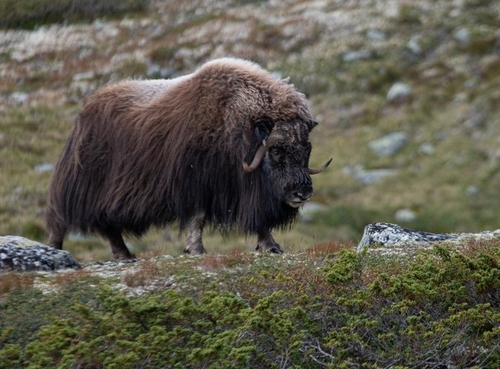
Muskox
The muskox, Ovibos moschatus, thrives in Arctic tundra with its dense, woolly coat and iconic horns. Known for forming defensive circles, these social herbivores graze on sparse vegetation, crucially impacting plant life and nutrient flow, embodying the resilience of the North's frigid expanses.
20 years
Lifespan
181.4369 - 408.2331 kg
Weight
Length: 1.2192 - 2.4384 m; Height: 1.22 - 1.52 m
Size
White, Dark, Brown
Color
4 years
Age of Sexual Maturity
10 months
Age of Weaning
37 mph
Top Speed
Least Concern
Conservation Status
Decreasing
Population Trend
Characteristics
The muskox, Ovibos moschatus, is a robust mammal adapted to Arctic environments. It has a thick coat, curved horns, and a social structure that involves forming protective circles against predators. They graze on tundra vegetation and play a crucial role in their ecosystem by influencing plant growth and nutrient cycling.
Distribution Range of the Muskox
Ovibos moschatus, commonly known as the musk ox, is native to the Arctic regions of North America and Greenland. Their historical range included parts of Siberia, but they are no longer found there naturally.
Muskox's Habitat
Environmental Conditions
Musk oxen inhabit tundra regions characterized by cold temperatures, limited vegetation, and permafrost. These areas have long, harsh winters with temperatures often dropping below -30°C (-22°F) and short, cool summers.
Ecological Niche
Musk oxen are adapted to grazing on grasses, sedges, and willows found in the Arctic tundra. They are well-suited to survive in extreme cold due to their thick, insulating fur and large body size, which reduces heat loss. Their ecological niche includes being both a grazer and a prey species for Arctic predators like wolves.
Copyright @ Nature Style Limited. All Rights Reserved.
 English
English